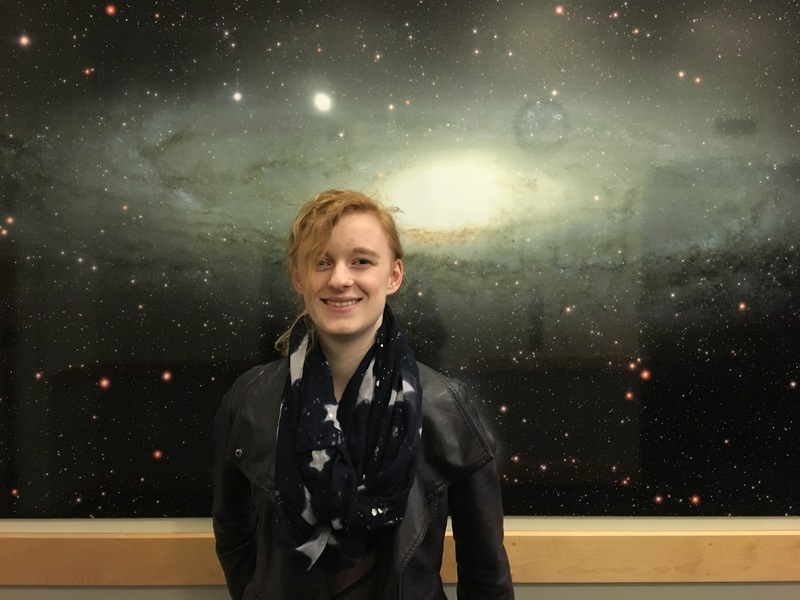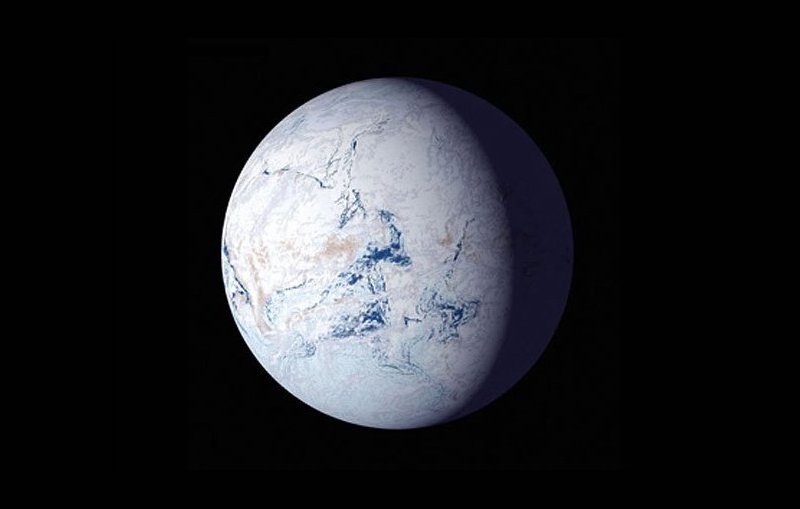
Our planet Earth is a water world, mostly covered in oceans. It’s also partially covered in sheets of ice at its poles. So you might assume that other, distant Earth-like planets in our Milky Way galaxy have similar icy polar caps. But an international team of scientists expressed doubts recently about the widespread presence of ice on exoplanets. The team’s new study suggests that exoplanets with icy poles like Earth’s are rare.
The scientists are from the University of Washington (UW) and the University of Bern. They announced their new study on December 8, 2021. The peer-reviewed Planetary Science Journal accepted the scientists’ results for publication. You can access the study as a free preprint at arXiv.
Little or no ice on Earth-like worlds
The researchers simulated possible climate conditions on rocky planets like Earth that orbit various kinds of stars. They found that in about 90% of cases there was little to no ice at the poles on these worlds. When there was ice, it was often at the equator. As Rory Barnes, a scientist with UW’s Virtual Planetary Laboratory, explained:
We essentially simulated Earth’s climate on worlds around different types of stars, and we find that in 90% of cases with liquid water on the surface, there are no ice sheets, like polar caps. When ice is present, we see that ice belts – permanent ice along the equator – are actually more likely than ice caps.

That is, obviously, the opposite of Earth. According to lead author Caitlyn Wilhelm at UW:
Looking at ice coverage on an Earth-like planet can tell you a lot about whether it’s habitable. We wanted to understand all the parameters – the shape of the orbit, the axial tilt, the type of star – that affect whether you have ice on the surface, and if so, where.
Using computer simulations
So, how did the researchers determine the probable extent of ice coverage? They used a 1-D energy balance model, which imitates the energy flow between a planet’s equator and poles. In this way, the scientists simulated the climates on thousands of hypothetical exoplanets in various orbital configurations around F-, G- or K-type stars. Our own sun is a G-type star.
The simulated orbits of the planets varied significantly from circular to oval-shaped. They also took into account the axial tilts of planets from 0 to 90 degrees.
The researchers simulated a 1-million-year timespan for each planet. This resulted in climates ranging from planet-wide “snowballs” (planets completely covered in ice) to “moist greenhouse” worlds. Those planets may be similar to how Venus was before its runaway greenhouse effect took hold. Most of the simulations were between those two extremes, yet partial ice was present on only about 10% of otherwise habitable planets.
Natural variations in axial tilt and orbit also played a role, according to co-author Russell Deitrick at the University of Bern:
Orbits and axial tilts are always changing. On Earth, these variations are called Milankovitch cycles and are very small in amplitude. But for exoplanets, these changes can be quite large, which can eliminate ice altogether or trigger ‘snowball’ states.
Distribution of ice
The researchers found that the distribution of ice on a planet varied according to the kind of star the planet orbits. Ice caps, like on Earth, were three times more common on planets orbiting F-type stars. However, ice belts around the equator were twice as common on planets orbiting G-type and K-type stars.
From the paper:
Planets orbiting F dwarfs are three times as likely to have ice caps than belts, but for planets orbiting K and G dwarfs, ice belts are twice as likely as caps.

Planets with extreme axial tilts also tended to have ice belts rather than ice caps. The researchers say this is due to seasonal extremes that keep polar climates more volatile than equatorial regions.
Impact on habitability
Ice alone, or the lack thereof, does not determine habitability. As Wilhelm noted:
Habitability encompasses a lot of moving parts, not just the presence or absence of ice.
The simulations will, however, help scientists know what they could expect to find on various rocky planets. Wilhelm said:
Surface ice is very reflective and can shape how an exoplanet ‘looks’ through our instruments. Whether or not ice is present can also shape how a climate will change over the long term, whether it goes to an extreme – like a ‘snowball Earth’ or a runaway greenhouse – or something more moderate.

Snowball planets
Some planets may also experience significant changes over time, as our own Earth has. Earth has had its own snowball periods in its history, where it was mostly covered by ice and snow. Yet as we know, life has still flourished here. Barnes said:
Our own planet has seen some of these extremes in its own history. We hope this study lays the groundwork for upcoming missions to look for habitable signatures in exoplanet atmospheres – and to even image exoplanets directly – by showing what’s possible, what’s common and what’s rare.
A study in 2018 suggested that Earth’s snowball periods may be linked to the advent of plate tectonics.
Bottom line: Ice on Earth-like worlds orbiting other stars may be fairly rare at the planets’ poles, according to a new study from researchers in the U.S. and Switzerland.
Source: The Ice Coverage of Earth-like Planets Orbiting FGK Stars











